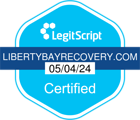Prescription Drug Use and Misuse
Individuals across the country take prescription medications for a variety of reasons. You may take medications on a regular basis (such as daily or weekly), or it may be for a short period of time to treat a temporary condition or illness. Some medications are also meant to be used on an as-needed basis.
Researchers collect data about prescription use to see how many drugs are being prescribed, how many are being used, which drugs are the most common, and what misuse looks like in the United States. This can then help inform the public of their risks and the ways to prevent or address misuse.
Yearly Prescription Drug Statistics
Research shows that between 4 to 5 billion prescriptions are filled each year in the United States. This number varies from year to year based on a variety of factors. Drug use for prescriptions, as well as over-the-counter (OTC) medications and illicit drugs, has been on the rise over the past decade.
Some of the most recent data regarding prescription medication use looked at 2015 – 2018. This research from the Centers for Disease Control and Prevention (CDC) demonstrated the following frequency of prescription drug usage in America:
• 48.6% took at least one drug in the last 30 days
• 24% took three or more in the last 30 days
• 12.8% took at least five or more
All of these percentages increased every time the CDC collected and reported on this data. In terms of where these medications are coming from, the CDC found that physicians prescribed or provided 860.4 million drugs, and hospital emergency departments prescribed or provided 336 million.
Most Common Prescriptions
Some of the most common scripts given out to patients involve analgesics, antihyperlipidemic agents, and antidepressants. Analgesics are pain-relieving medications often given after surgery, after an injury, for short-term aches and pains, for small pain-causing incidents, and for pain and discomfort from chronic conditions.
Antihyperlipidemic agents are meant to reduce the fats and the fats with protein in the blood. They are also referred to as cholesterol-lowering drugs. In addition to reducing lipids, they help prevent concerns such as heart disease. Common antihyperlipidemic drugs include atorvastatin, lovastatin, and rosuvastatin.
Antidepressants are drugs used to relieve symptoms associated with depression and anxiety. Antidepressants work in many different ways depending on the type of drug. Common prescriptions include Zoloft, Prozac, Lexapro, Luvox, and Celexa. They may also be accompanied by benzodiazepines when individuals struggle with anxiety.
GoodRx compiled a list of the top 10 prescription medications used by Americans in November 2021:
• Atorvastatin: treats high cholesterol
• Lisinopril: treats high blood pressure
• Albuterol: treats and prevents bronchospasms
• Levothyroxine: treats thyroid deficiency
• Amlodipine: treats high blood pressure and chest pain
• Gabapentin: treats seizures and nerve pain
• Omeprazole: treats ulcers, gastroesophageal reflux disease (GERD), and other conditions from excess stomach acid
• Metformin: helps control blood sugar levels for those with type 2 diabetes when combined with diet and exercise
• Losartan: treats high blood pressure, reduces stroke risk, and slows kidney disease progression for diabetes patients
• Hydrocodone/Acetaminophen: treats moderate to severe pain caused by a range of issues
Why Prescription Drug Use Matters
Statistics around prescription medication usage can help provide information about common issues people are dealing with and the types of medications that are being used to treat these issues. For example, pain-relieving medications may top the list of prescriptions because they cover such a wide range of issues. They can help with everything from a small headache to recovery after major surgery. Medications for high cholesterol could correlate with lifestyle trends in the United States, such as eating and exercising habits. And finally, antidepressant use can signal the extent of depressive disorders across the country.
Research is constantly being done to develop new medications and to test and boost the efficacy of existing drugs. Seeing what medications are used the most could correlate with how effective they are. Furthermore, experts can look into the symptoms, side effects, and potential risks of popular medications. One major concern is prescription drug misuse.
Risks Associated With Prescription Drug Use
Prescription drugs each have their own list of potential symptoms and side effects. Individuals should discuss these with their doctor prior to taking the medication and be sure there are no harmful interactions with other prescriptions they may be taking.
Another risk of taking prescriptions is misuse. Misuse could be taking the drug when you shouldn’t, taking more than you were prescribed, or taking it more often than needed or prescribed. This can lead to more serious issues, such as adverse effects on your health, addiction, dependence, overdose, and, in severe cases, death.
Reasons Behind Drug Misuse
There are several reasons why an individual might misuse prescription medications. Some reasons may be:
• To help with sleep
• For help staying awake
• To help with concentrating or studying
• For help managing pain and discomfort
• To relieve tension or relax
• To get “high” or to find an “escape” from certain feelings or issues
Misuse can also be influenced by:
• A history of addiction in the family – Many experts think addiction is genetic, so having a parent or sibling with an addiction could mean you are at greater risk of developing an addiction yourself.
• Mental health disorders – Disorders like depression, post-traumatic stress disorder (PTSD), and attention-deficit/hyperactivity disorder (ADHD) can cause individuals to turn to drugs to deal with uncomfortable or painful feelings.
• Peer pressure – Pressure from friends can push individuals to misuse drugs, especially younger individuals.
• Drug addictiveness – Some drugs are considered highly addictive, such as strong painkillers, causing individuals to struggle with mental and physical side effects when quitting or coming off of a drug. Drugs may also become addictive if they are started at an early age and continued for years.
• Life challenges – Trauma, unsafe living conditions, uninvolved family members, lack of supervision when young, and other life challenges can cause individuals to misuse medications as a way to cope or escape.
Prescription Drug Misuse
Collecting statistics about drug misuse can help experts identify which drugs pose the highest risk. It can also help promote preventative actions, such as warning patients, limiting refills, monitoring for symptoms, and more.
Commonly Misused Prescription Medications
There are some prescribed medications that stand apart from others in terms of how frequently people misuse them. Common types of drugs that are misused include psychotherapeutic drugs, stimulants, tranquilizers or sedatives, benzodiazepines, and prescription pain relievers.
The following statistics refer to individuals 12 years old and older, reporting on their drug use over the past 12 months in 2020:
• 5.8% reported that they misused a prescription psychotherapeutic drug
• 1.8% reported that they misused prescription stimulants
• 2.2% reported that they misused benzodiazepines
• 3.3% reported that they misused prescription pain relievers
Specific commonly misused prescription medications in the United States include:
• Morphine, codeine, oxycodone, hydrocodone, and meperidine (painkillers, also known as narcotics, opiates, or opioids, to help with pain and discomfort)
• Nembutal, Valium, and Xanax (depressants to help with anxiety and sleep)
• Ritalin, Dexedrine, Concerta, and Adderall (stimulants to help with concentration, focus, and symptoms of ADHD)
While these medications are prescribed under the care of a doctor, doctors aren’t always there to monitor how and when the drug is being used. It’s also problematic to use someone else’s prescription.
Signs of Prescription Drug Misuse
Misuse continues to increase year over year, especially in younger populations. Side effects vary based on the medication, but there are common red flags to look out for in yourself or those close to you. The first step to addressing drug misuse is identifying warning signs. They can vary greatly from person to person and based on the medication type. They may be extremely noticeable or difficult to recognize.
Behaviors and symptoms to look out for include:
• Needing higher doses to get the same effect
• Feeling reliant on the medication or reliant on taking more than normal
• Feeling urges and impulses to take the drug to block out certain thoughts and feelings
• Going through drastic measures to get more of the medication
• Continuing to use the drug when it’s no longer needed, when you realize it’s causing problems, or when you know you’re misusing it
• Becoming distant from loved ones, not showing up to work, not doing activities you love, or seeing changes in other aspects of your life
• Struggling to stop taking the drug
• Experiencing withdrawal symptoms when you lower your dose or stop taking the medication
While symptoms of misuse and addiction vary based on the drug, some common signs might include:
• Feeling “high” or euphoric
• Changes in your breathing
• High blood pressure or low blood pressure
• Drastic changes in social behavior
• Panic attacks
• Shakiness
• Slurred speech
• Irritability or drastic changes in your mood
• Lightheadedness or dizziness
• Trouble concentrating or forming your thoughts
• Lack of coordination and memory
• Impaired judgment
• Insomnia or drowsiness
• Nausea, vomiting, or weight loss
• Hallucinations
• Chills or excessive sweatiness
Share any symptoms you’re experiencing or witnessing with a medical professional. Be transparent about what medications you’re taking, what dosage, and any other pertinent details. This will help them guide you toward the next steps. Some people experience such symptoms when they are taking their medication as prescribed. In those scenarios, they may need to change their medications or receive lower dosages. It’s best to seek professional help.
How to Stop the Misuse of Prescription Medication
When you recognize medication misuse, seek help. Suddenly stopping a medication can lead to additional issues, including withdrawal symptoms. It may be best to gradually decrease how much medication you’re taking to prevent potentially harmful side effects. A medical professional can help. Some strategies to help you through recovery might include:
• Pinpointing the cause of drug misuse
• Practicing new skills to resist and avoid using
• Developing strategies that help you feel in control
• Identifying alternative activities to replace drug misuse
• Learning what to do in the event of a potential or actual relapse
• Finding support from others who have been in a similar situation or who are trained to help
Rehabilitation programs help a range of individuals, including those facing the challenge of prescription drug misuse. Liberty Bay Recovery Center is one example of a treatment facility offering alcohol rehab and drug detox. Our facility has addiction recovery experts ready to help you or a loved one with compassion, care, and understanding.
Recovery isn’t a one-size-fits-all process. Liberty Bay can help you find the right treatment plan for you or someone close to you. Therapies we offer include cognitive behavioral therapy, dual diagnosis treatment, medication-assisted treatment, and trauma therapy. Whether the outpatient program or inpatient rehab and partial hospitalization program (PHP), we will ensure you get the help you need in an environment that is comfortable and safe.





